In the early 1990s, fashion trends mixed comfort and self-expression like never before. Women rocked vibrant neon colors and geometric prints, often pairing them with denim button-downs and metallic leggings. Meanwhile, men favored baggy jeans and oversized tees, influenced by hip-hop and grunge culture. This era saw a shift toward thrift store finds, celebrating unique styles. Iconic figures like Naomi Campbell and Kurt Cobain defined looks that many embraced, showing off individuality. Retailers adapted by focusing on casual wear, making stylish options more accessible. Curious about how these trends shaped today's fashion landscape? There's much more to explore!
Womenswear Trends
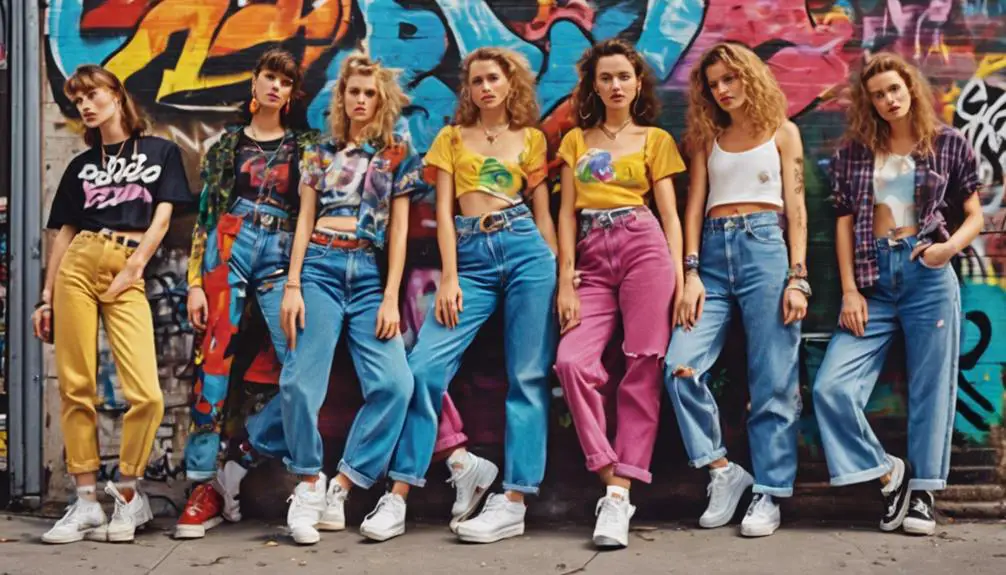
The early 1990s brought a fresh wave of womenswear trends that defined the decade's style. You'd notice the popularity of bob cuts, a haircut that perfectly encapsulated the minimalist aesthetic of the time. This sleek hairstyle paired well with bold choices in clothing, especially as neon colors and geometric prints became staples in casual wear and party attire.
Denim styles were also evolving, with influences from the era's key denim styles, highlighting the significance of comfort in fashion. You could often see denim button-down shirts paired with metallic Spandex leggings, which embodied that casual yet chic vibe. The emergence of leggings as everyday wear was heavily influenced by the fitness craze of the late 1980s and early 1990s. Women embraced leggings not just for workouts but as a fashionable way to express their individuality.
Accessories played a vital role in this era, too. You'd find court shoes, cowboy boots, and headscarves adding flair to any outfit. These elements contributed to a diverse range of styles, allowing you to mix and match to showcase your personality.
Womenswear trends in the early 90s were all about comfort and creativity. The fashion scene encouraged you to experiment, blending casual wear with unique accessories to create a look that was distinctly yours.
Menswear Trends
As womenswear embraced bold colors and unique styles, menswear in the early 1990s took a different route, leaning heavily into comfort and casualization.
The fashion landscape for men shifted dramatically, influenced by grunge music and urban hip-hop culture, much like how vintage tags and designs evolved over the decades. You'd see oversized flannel shirts and distressed jeans everywhere, creating a relaxed and nonchalant vibe that defined the era.
Here are four key trends that shaped menswear in the early 90s:
- Casual Fridays: This movement allowed men to swap suits for jeans and sweatshirts, paving the way for relaxed office attire.
- Thrift Store Fashion: Embracing individuality, many guys turned to thrift stores, showcasing a disheveled look that rejected mainstream trends.
- Baggy Silhouettes: Comfort was key, and baggy trousers, oversized tees, and hoodies became the norm, especially influenced by hip-hop culture.
- Grunge Aesthetic: The grunge scene popularized rugged, laid-back styles, with distressed jeans and flannel shirts becoming must-have staples in every young man's wardrobe.
These menswear trends weren't just about looking good; they represented a shift toward authenticity and self-expression.
You could mix and match, creating your unique style without worrying about fitting in.
Cultural Influences
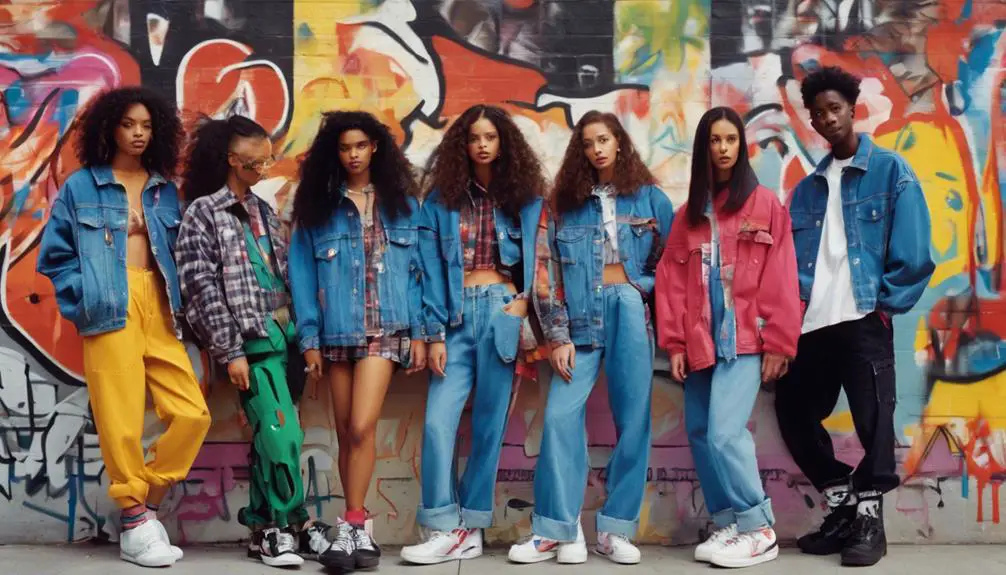
While the early 1990s saw a diverse range of influences shaping fashion, the era's cultural backdrop was pivotal in defining its trends. One of the most significant movements was the rise of grunge fashion, heavily popularized by bands like Nirvana. This style embraced a thrifted aesthetic with flannel shirts and baggy jeans, rejecting the polished looks of previous decades.
You could easily spot young women sporting these relaxed silhouettes, showing that comfort was becoming a priority. This shift in style mirrored the growing popularity of vintage clothing trends, as many sought unique pieces that reflected personal expression.
At the same time, hip-hop culture burst onto the scene, bringing bold graphics and oversized silhouettes into everyday wardrobes. Tracksuits and sneakers became staples, allowing people to express their individuality while staying comfortable.
Movies like "Clueless" and "Pretty Woman" also played a huge role in shaping young women's fashion, showcasing tailored looks that highlighted femininity and sophistication.
The emergence of supermodels like Naomi Campbell and Cindy Crawford turned fashion into a significant element of pop culture, making their styles aspirational for many. You'd see their looks featured in magazines and on runways, influencing countless trends.
Additionally, the nostalgia for past decades crept into the fashion landscape, with retro patterns and long floral dresses becoming popular among young women.
In this vibrant mix of influences, the early '90s laid the foundation for a diverse fashion scene that combined comfort, individuality, and a touch of glamour, reflecting the complexities of the era.
Fashion Icons
Fashion icons of the early 1990s played a pivotal role in shaping the trends and aesthetics of the decade. These influential figures didn't just set styles; they defined a cultural moment that resonated with youth around the world. Designers like Jean Paul Gaultier were instrumental in pushing fashion boundaries during this time, bringing provocative designs and cultural influences to the forefront.
You might remember some of these standout icons who made waves in fashion:
- Naomi Campbell – One of the original supermodels, Naomi's fierce looks and runway presence inspired countless fashion trends.
- Kate Moss – She brought the "heroin chic" aesthetic into the spotlight, showcasing a more androgynous and vulnerable beauty that changed the modeling game.
- Madonna – With her unforgettable Jean Paul Gaultier corset, Madonna pushed boundaries and set trends that echoed throughout the early '90s.
- Kurt Cobain – The Nirvana frontman popularized the grunge look, characterized by flannel shirts and ripped jeans, influencing a generation's casual style.
Other notable mentions include Cindy Crawford, another supermodel who became a household name, and the Olsen twins, who captivated young audiences with their unique blend of tomboyish and feminine styles.
These fashion icons didn't just wear clothes; they embodied the spirit of the decade, impacting everything from runway shows to everyday wear. Their legacies continue to inspire modern fashion trends, reminding us how powerful style can be in shaping identity and culture.
Retail and Consumer Shifts
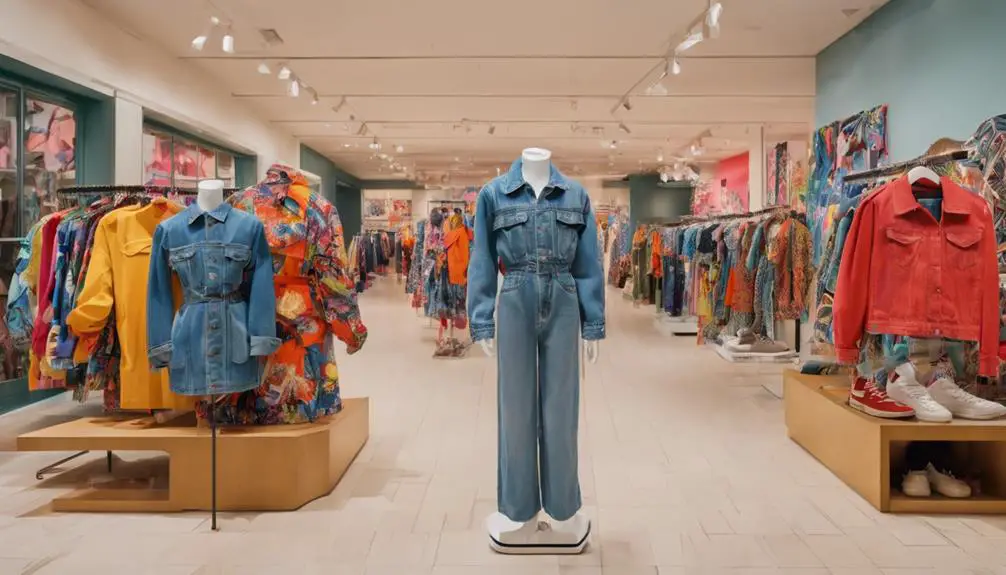
The early 1990s marked a significant turning point in retail, with a noticeable shift towards casual wear that resonated with consumers everywhere. Brands like The Gap popularized casual clothing staples such as hooded sweatshirts and cargo pants, making them must-have items.
As you walked through malls, stores like Abercrombie & Fitch and Express catered to the youth demographic, offering fashionable yet relaxed styles that captured the spirit of the era. During this time, Ralph Lauren expanded its offerings with various sub-brands, including Polo Sport, which appealed to the growing casual and athletic markets.
During this time, thrift store fashion gained traction, as more people sought unique vintage items that reflected their individuality and the growing popularity of grunge aesthetics. This trend encouraged many to embrace a more personal style, stepping away from mainstream fashion.
Major brands adapted to these changing consumer preferences by implementing brand strategies that included licensing and diffusion labels. For example, Ralph Lauren expanded its reach with multiple lines to attract a broader audience.
The rise of mall culture also contributed to increased foot traffic in retail spaces, where shoppers found an abundance of casual options.
However, the landscape began to change dramatically with the introduction of the first major online fashion retailers in 1998. This shift laid the groundwork for the digital transformation of the fashion industry, reshaping how you and others shop.
As consumer habits evolved, the retail landscape adapted, forever altering the way you connect with fashion trends in your daily life.
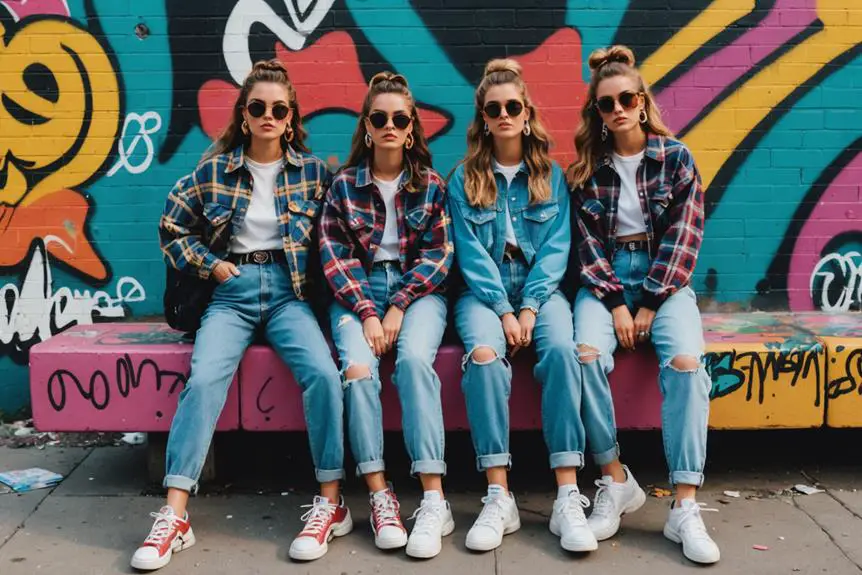

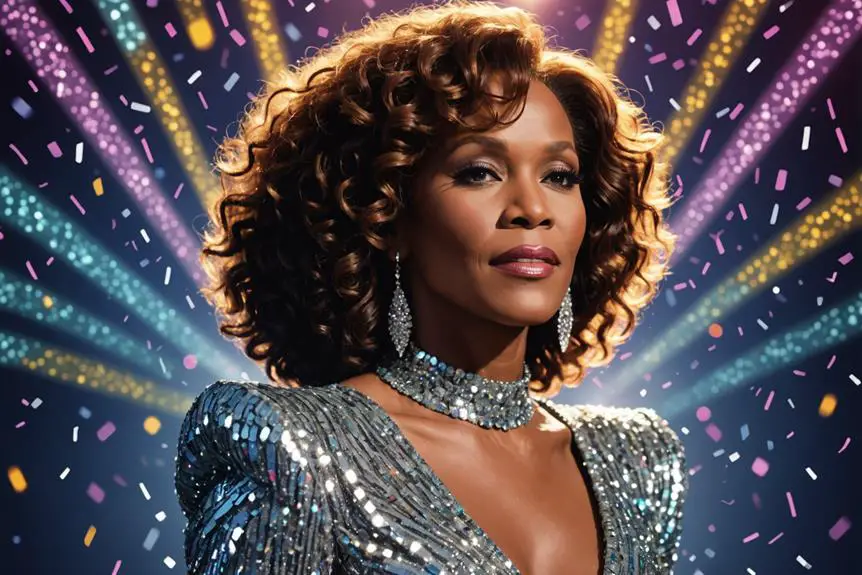

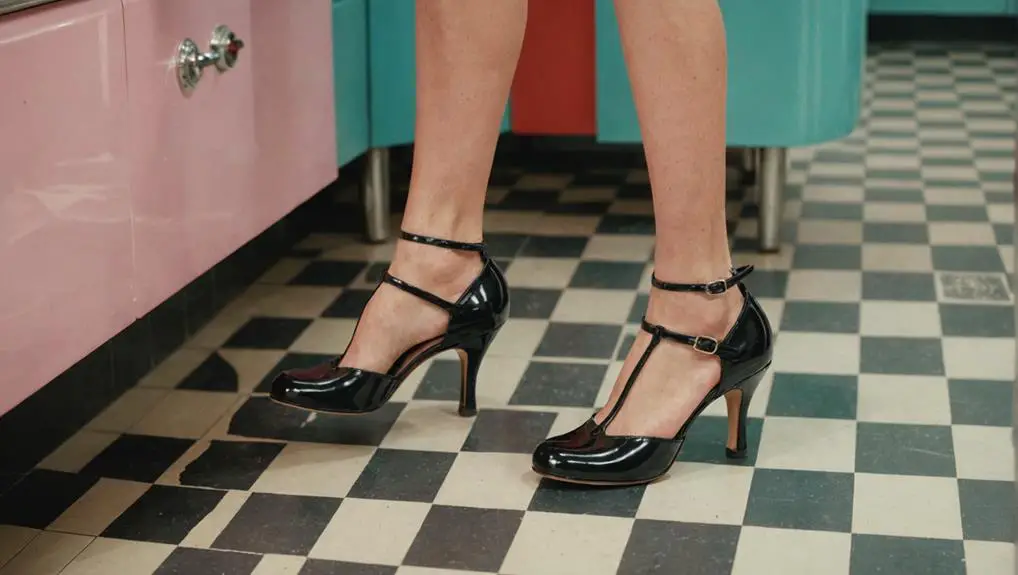
I enjoy your writing style truly enjoying this web site.